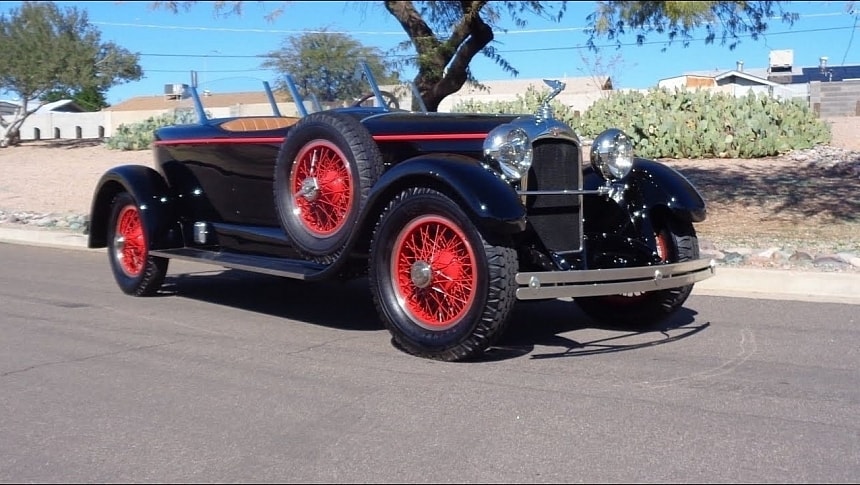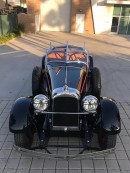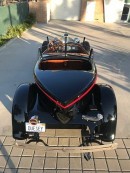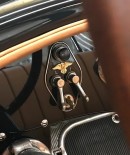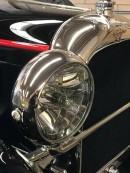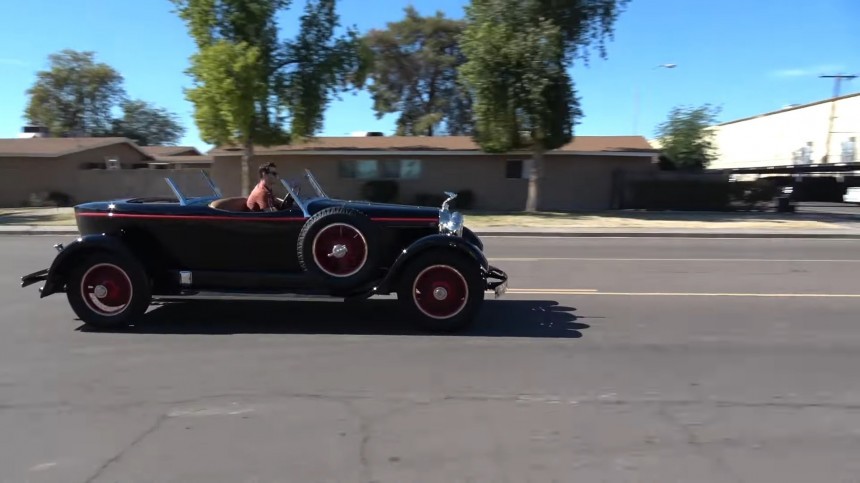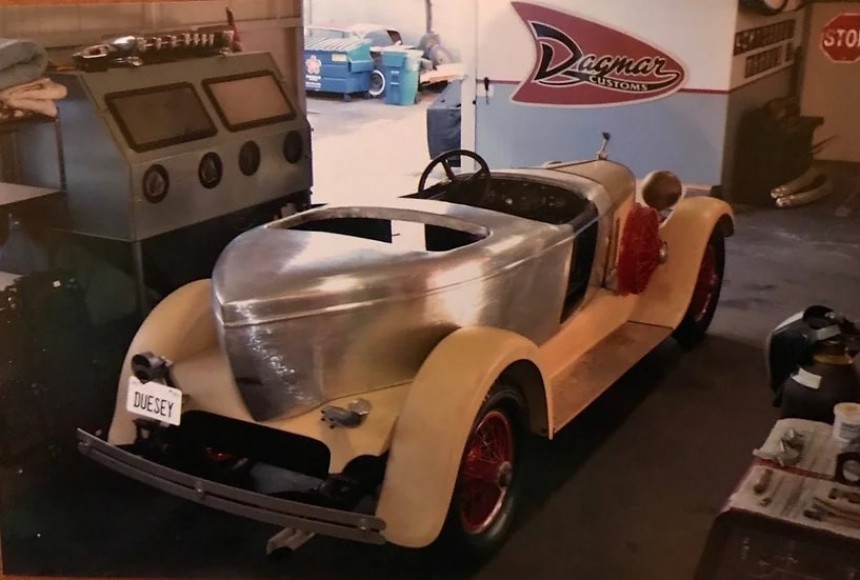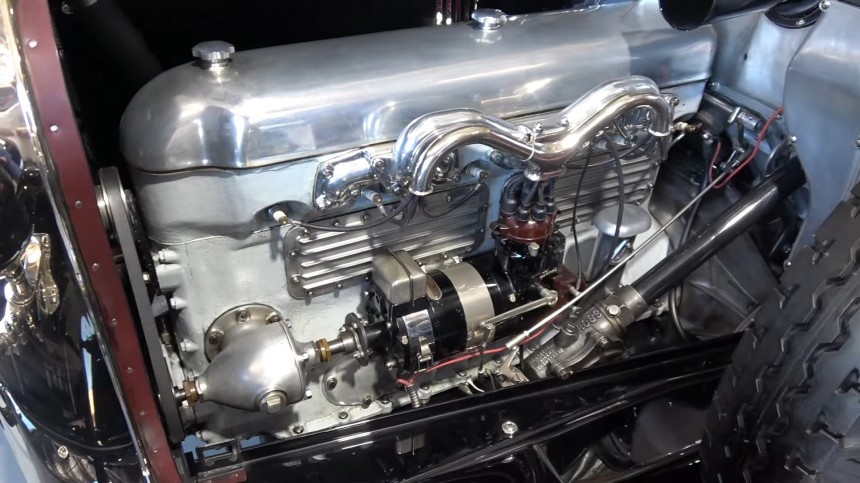The early twenties were some pretty hectic times for the world, and we still have some resonances of those troubled times that echo to this day. Remember, humanity was striving to get back up on its feet after a pandemic that eradicated tens of millions of lives, forcing governments to enforce curfews. Sanitary face masks were mandatory, alcohol was illegal, and two gearhead-infected brothers were building an American hypercar.
I should point out that it was the 1920s that I’m talking about, not the recent past of our contemporaneity. The Spanish influenza (which had about as much to do with Spain as Latin America has with the Roman Empire) was ravaging the world – the total number of casualties is estimated at around 100 million. For the sake of numbers, that’s about twice as many fatalities as the two world wars put together.
The Prohibition was in full effect – no alcoholic beverage consumption was probably far worse than the killer flu and the horrors of the Great War put together – but two certain brothers weren’t concerned with anything like that.
Fred and August Duesenberg were far above and ahead of everyone else in the car-making business; they were in a world of their own. It's not just a league but a different universe altogether. By 1921, they were already manufacturing and selling (with moderate success, impeccable mechanics, and outrageously high price) their first car, the Duesenberg Straight 8.
The car wasn’t produced in the fashion we take for granted today. Still, it came as a rolling chassis fitted with the powertrain. Then, the buyer would commission a coachbuilder to finish the job by putting a body onto the frame. It was a common practice one hundred years ago, but the price for such an extravagance was obscenely high in Duesenberg's case.
A complete car would set back the buyer some $8,500, the purchasing power equivalent of $153,306.70 in January 2025. That’s why not too many could afford one, even fewer actually paid, and fewer still exist today. Each is a one-off since the bodies were made to order; therefore, no two are identical.
One of them is featured in the video below (Lou Costabile is the main culprit again), and it’s a conversation-stopper like no other. A boattail speedster from 100 years ago that still retains its original chassis, engine, and driveline. Yes, it was restored several years back (before being bought by the current owner, one massive gearhead and classics collector), and the work is estimated at around $400,000.
The first Duesenberg model was revolutionary in several aspects. First off, its name – Straight 8 – is a self-explanatory giveaway about its powerplant architecture. A 260 cubic-inch inline-eight (the first company to mass-produce this type of motor in the United States of Automobile) that produced around 90 hp (91 PS). 4.3 liters with a hemispherical combustion chamber, an overhead camshaft, a gear drive, and 4,000 RPM capability.
That’s right, Chrysler wasn’t the first to use the dome-shaped heads, and Pontiac didn’t break any barriers when it introduced their famous OHC-6 in 1966. As for the gear drive, imagine there’s no chain of belt connecting the engine’s auxiliaries to the crankshaft but a vertical camshaft with several gears on it. Pretty advanced, wouldn’t you agree?
The Duesenberg brothers also installed four-wheel hydraulic brakes on the car – the first company to do so. However, they didn’t patent their invention – the engineers had minimal inclination toward the money-making side of their business. That’s one of the reasons the company didn’t make it (by 1937, it was out of the spotlights for good).
The car we see in the video below is a speckless example of what automobile excellence was an entire century ago. That’s not an artistic license but a hard fact. A Duesenberg won the Indy 500 in 1924 – out of the first ten cars across the line, eight were Duesenbergs. What more proof is needed that the vehicles were sublime mechanically?
It wasn’t a coincidence, either. Duesenberg again took the first step of the podium in 1925 and 1927. Still, the company’s racing legacy debuted in 1921 in Europe in France, to be more specific, where the French Grand Prix – the precursor of the 24 Hours of Le Mans – was considered one of the greatest races in the world.
A 3.0-liter eight-cylinder race engine beat the favorites - French Ballot entries –15 minutes after braving the endurance run's 322 miles (518 km) of dirt track. The last lap was a display of motoring perfection, with the winning car getting across the finish line with a cracked, dry radiator, flat tires, and scorching-hot straight-eight. Jimmy Murphy became the first American driver to take the French GP in an American Car – a record that was equaled by Dan Gurney and his Eagle Mk 1 to victory in Belgium at Spa-Francorchamps in 1967.
The Prohibition was in full effect – no alcoholic beverage consumption was probably far worse than the killer flu and the horrors of the Great War put together – but two certain brothers weren’t concerned with anything like that.
Fred and August Duesenberg were far above and ahead of everyone else in the car-making business; they were in a world of their own. It's not just a league but a different universe altogether. By 1921, they were already manufacturing and selling (with moderate success, impeccable mechanics, and outrageously high price) their first car, the Duesenberg Straight 8.
A complete car would set back the buyer some $8,500, the purchasing power equivalent of $153,306.70 in January 2025. That’s why not too many could afford one, even fewer actually paid, and fewer still exist today. Each is a one-off since the bodies were made to order; therefore, no two are identical.
One of them is featured in the video below (Lou Costabile is the main culprit again), and it’s a conversation-stopper like no other. A boattail speedster from 100 years ago that still retains its original chassis, engine, and driveline. Yes, it was restored several years back (before being bought by the current owner, one massive gearhead and classics collector), and the work is estimated at around $400,000.
That’s right, Chrysler wasn’t the first to use the dome-shaped heads, and Pontiac didn’t break any barriers when it introduced their famous OHC-6 in 1966. As for the gear drive, imagine there’s no chain of belt connecting the engine’s auxiliaries to the crankshaft but a vertical camshaft with several gears on it. Pretty advanced, wouldn’t you agree?
The Duesenberg brothers also installed four-wheel hydraulic brakes on the car – the first company to do so. However, they didn’t patent their invention – the engineers had minimal inclination toward the money-making side of their business. That’s one of the reasons the company didn’t make it (by 1937, it was out of the spotlights for good).
It wasn’t a coincidence, either. Duesenberg again took the first step of the podium in 1925 and 1927. Still, the company’s racing legacy debuted in 1921 in Europe in France, to be more specific, where the French Grand Prix – the precursor of the 24 Hours of Le Mans – was considered one of the greatest races in the world.
A 3.0-liter eight-cylinder race engine beat the favorites - French Ballot entries –15 minutes after braving the endurance run's 322 miles (518 km) of dirt track. The last lap was a display of motoring perfection, with the winning car getting across the finish line with a cracked, dry radiator, flat tires, and scorching-hot straight-eight. Jimmy Murphy became the first American driver to take the French GP in an American Car – a record that was equaled by Dan Gurney and his Eagle Mk 1 to victory in Belgium at Spa-Francorchamps in 1967.
